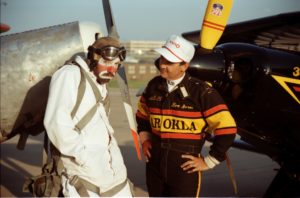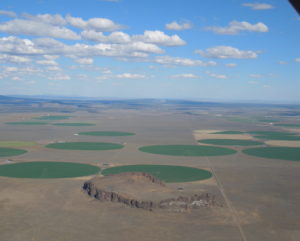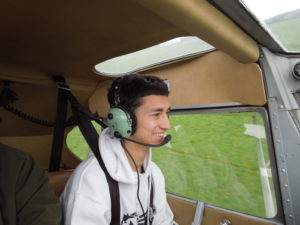We had a few outtakes left over from our production of “Tailwheeler’s Journal: The Movie”. In one of them, I jokingly scolded Janaé, saying, “don’t you know that you’re always supposed to do what your instructor says?”
It was funny to us because it referred to the fact that she turned a corner prior to soloing. It was a “confidence corner”. She had reached a point where she felt confidence in her own ability and judgment. From time to time she would argue with me. I gave her a hard time about her short field technique of three-pointing the touchdown, then turning it into a wheelie and hopping on the brakes. I gave her a hard time about it until the identical technique won the short landing contest at the Bush Pilot’s Fly-in at Valdez, Alaska.
We may have joked about these arguments, but the development of a student’s confidence to the point where he questions his instructor is extremely important.
I’ve often sympathized with the situation in which beginning student pilots find themselves: They enter flight training with little or no knowledge and depend on their flight instructor to be right. Unfortunately, those instructors are sometimes wrong. And the bad instruction creates baggage that the student pilot carries with him, sometimes into an aviation career which often includes… yup, flight instruction.
The most common example of this baggage is one I find in almost every tailwheel student with whom I fly. It has to do with the inclinometer ball normally found in the turn coordinator or turn and slip indicator. I ask every student, “did your first instructor tell you that to coordinate your turns you should “step on the ball”?
The answer is almost always “yes”. By teaching the student to “step on the ball” or refer to the inclinometer for coordination reference, the instructor has passed up an opportunity to familiarize the student with the technique
of coordinating aileron and rudder by feeling his own body swaying and simply applying rudder to keep his body upright in the seat while keeping his eyes outside the cockpit where they belong. It?s a skill that would serve the student faithfully for the rest of his flying career… if it were ever taught. But new students never question this advice and that is my point.
Students who question their instructors will learn more completely. They will sometimes uncover areas in which their instructors might not be real competent. For example, I’ve had several students whose judgment of gliding accuracy was better than mine. Instructors who encourage their students to question “conventional wisdom” will become better instructors.
We all have to remember that flying is both art and science. As such, there is rarely just one proper way to conduct any pilot operation. As instructors, we need to remember that. Let?s not do anything because “we’ve always done it this way”. And let’s encourage our students to question their instructors.
Happy Swooping,
Brian



